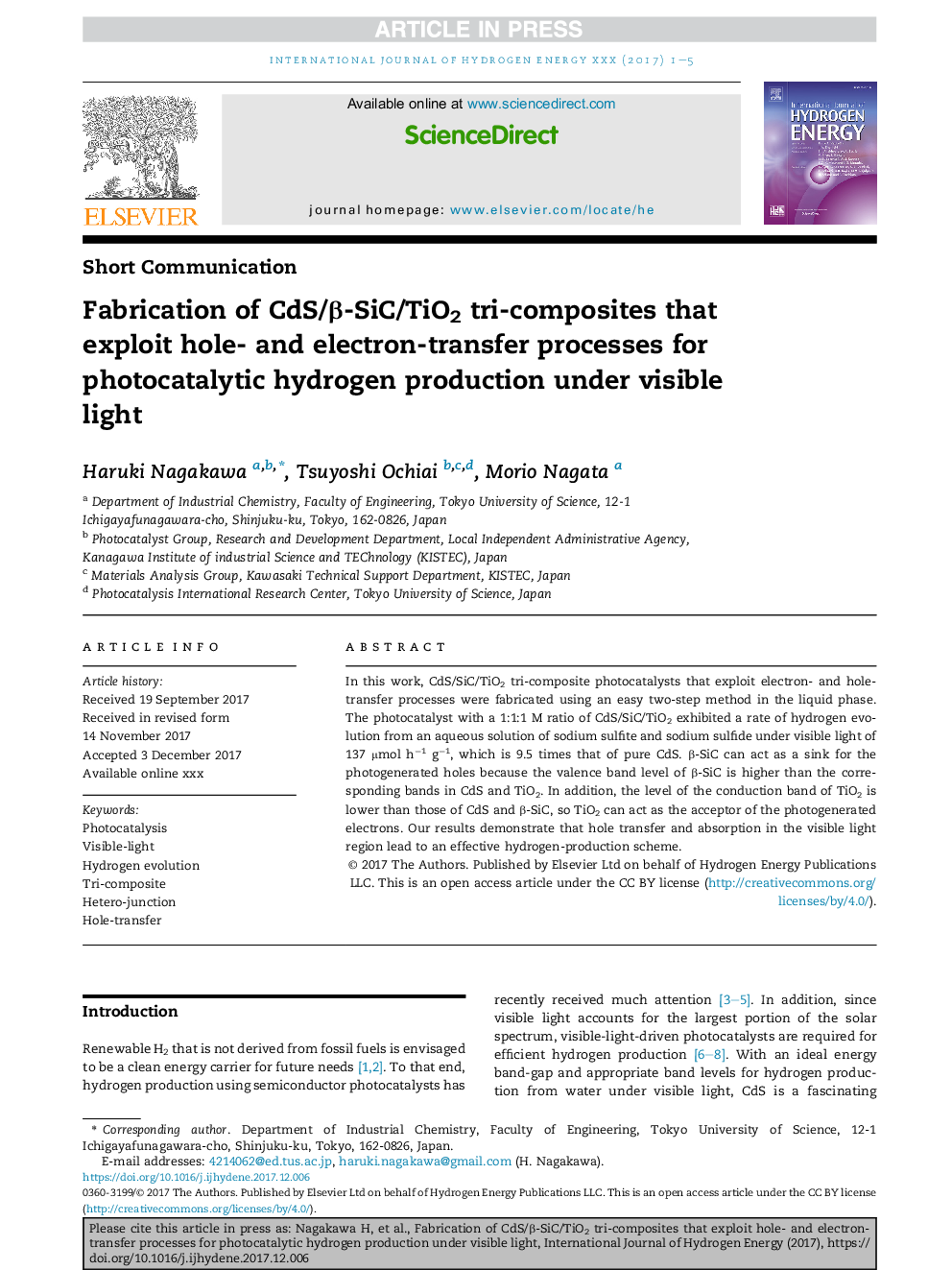| Article ID | Journal | Published Year | Pages | File Type |
|---|---|---|---|---|
| 7708201 | International Journal of Hydrogen Energy | 2018 | 5 Pages |
Abstract
In this work, CdS/SiC/TiO2 tri-composite photocatalysts that exploit electron- and hole-transfer processes were fabricated using an easy two-step method in the liquid phase. The photocatalyst with a 1:1:1 M ratio of CdS/SiC/TiO2 exhibited a rate of hydrogen evolution from an aqueous solution of sodium sulfite and sodium sulfide under visible light of 137 μmol hâ1 gâ1, which is 9.5 times that of pure CdS. β-SiC can act as a sink for the photogenerated holes because the valence band level of β-SiC is higher than the corresponding bands in CdS and TiO2. In addition, the level of the conduction band of TiO2 is lower than those of CdS and β-SiC, so TiO2 can act as the acceptor of the photogenerated electrons. Our results demonstrate that hole transfer and absorption in the visible light region lead to an effective hydrogen-production scheme.
Related Topics
Physical Sciences and Engineering
Chemistry
Electrochemistry
Authors
Haruki Nagakawa, Tsuyoshi Ochiai, Morio Nagata,
